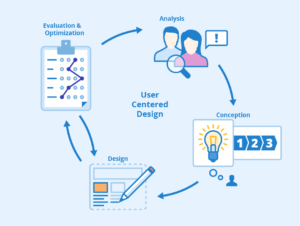Demystifying the 415 Unsupported Media Type Error: Causes and Solutions – Your Comprehensive Guide
Introduction
In the dynamic world of web interactions, error codes act as signposts guiding us through the complexities of online communication. Among these codes, the “415 Unsupported Media Type” error stands out as an indication that the server cannot process the data format you’ve provided in your request. In this comprehensive guide, we’ll delve into the intricacies of the 415 error, explore its underlying causes, and provide you with a step-by-step guide to effectively troubleshoot and resolve it.
Understanding the 415 Unsupported Media Type Error
The “415 Unsupported Media Type” error is an HTTP status code that signifies that the server cannot process the data format or media type you’ve specified in your request. It usually occurs when the server expects a certain media type for the request but receives a different or unsupported format.
Common Reasons for the 415 Error
- Incompatible Data Format:The primary cause of a 415 error is providing a data format or media type that the server cannot understand or process.
- Incorrect MIME Types:MIME (Multipurpose Internet Mail Extensions) types are used to identify the format of the data being transferred. An incorrect or unsupported MIME type can trigger the error.
- Missing or Incorrect Headers:If the request headers specifying the media type are missing or incorrect, the server might respond with a 415 error.
Resolving the 415 Unsupported Media Type Error: Step-by-Step Guide
- Check Request Headers:Review the request headers you’re sending to ensure that the “Content-Type” header accurately reflects the media type of the data you’re including.
- Use Proper MIME Types:Use the correct MIME type for the data you’re sending. MIME types are standardized and help servers understand the format of the content.
- Consult API Documentation:If you’re working with APIs, refer to the API documentation to understand the acceptable media types for different types of requests.
- Verify Encoding:Ensure that the encoding specified in the “Content-Type” header matches the actual encoding used for the data.
- Update Code:If you’re a developer, double-check your code to ensure that you’re correctly specifying the media type and headers.
- Use Default Media Types:If you’re uncertain about the acceptable media types, use the default media types specified in the HTTP specification.
- Test Different Formats:If possible, experiment with different media formats to see if the server supports any of them.
- Inspect Server Response:Analyze the server’s response headers for additional details about why the media type is unsupported.
- Contact Support:If the error persists despite your efforts, reach out to the website’s support team or your server administrator for assistance.
Conclusion
Facing the 415 Unsupported Media Type error might feel like a technical hiccup, but equipped with an understanding of its origins and potential solutions, you’re now better prepared to address it. Whether it’s about using the correct MIME types, verifying headers, or consulting API documentation, this guide empowers you to navigate through the complexities of media type compatibility with confidence. Remember, attention to detail and a methodical approach are key to resolving the 415 error and ensuring smooth data transmission in your online interactions.
For More Related Articles Browse Our Website Blogster.pk
For social Connection You can also Visit and follow our Social media Platforms
Facebook , Instagram, Linkedin, Pinterest, Quora, Twitter, Youtube.





